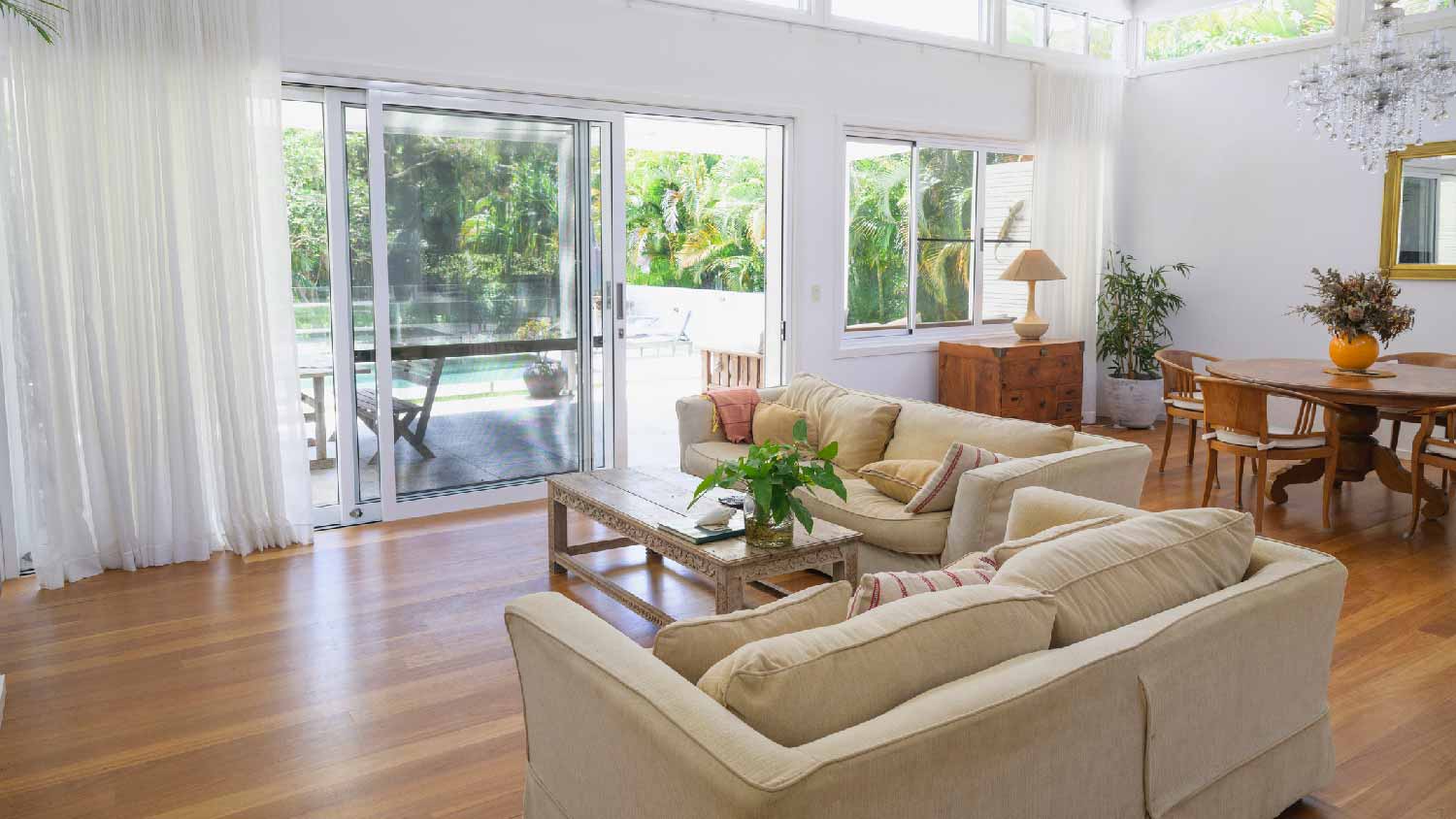
Both materials and labor determine hardwood floor installation costs. This guide breaks down all the prices you need to know before starting your new flooring project.
Get your floors refinishing-ready


For a moderately handy homeowner, refinishing hardwood floors can be an inexpensive way to make a major impact in your home. However, before you can start on your project, you’ll need to properly prep your space. Failing to do so could turn your quick-and-easy weekend renovation into a lengthy and expensive undertaking.
If the idea of going through all of this extra prep work before you can even get started on refreshing your floors sounds like way more than you bargained for, you can always hire a local flooring expert to come in and do the job for you. You should expect to pay around $125 to $225 for smaller jobs. Larger jobs, or projects where a lot of damaged flooring needs to be repaired, could end up costing much more.
First things first, you’ll need to clean out the room you’ll be working in before getting started. This means everything from furniture to window treatments to any pictures that might be hanging on the wall. You’ll kick up a lot of dust and debris while sanding the floors, so you want as little left in the room as possible when you get started.
You’ll need to sand the flooring to get the original stain off, which means you’re going to send a lot of dust into the air. The last thing you want is for those small particles to invade the rest of your home.
Using plastic sheeting, you should tape off any doors and air vents. Even vents that blow air out should be covered so you don’t end up needing to clean dust from the ductwork.
After putting on your safety goggles and hearing protection, begin removing your existing finish using the sander loaded with 40-grit paper. As you're running the machine, make sure you’re using small, even circles to remove the stain.
Begin around the perimeter and move toward the center of the room as you work. The sander should always be in motion and never stopped in a specific spot—this can wear away at the wood flooring itself.

Even if you’re super careful while you’re sanding, there may still be damaged bits of flooring that need to be repaired.
Clean up the space with the shop vacuum so that you can see any problem areas before using a wood filler in order to tackle these spots. Following the manufacturer's directions, apply the wood filler to any scratches, gouges, and gaps.
After you’ve applied the wood filler, go over the surface of the floor with the sander again. This ensures you have not only gotten all of the original stain, but also that there are no raised areas where the filler didn’t settle correctly.
Do one pass with the 60-grit paper and then a second with the 100-grit paper.
Once your sanding is done, vacuum again. Begin with window ledges and framework, then work your way down to the floor. This should help pick up any dust you stirred up while sanding.
Use an attachment to reach the higher areas in the room where dust might’ve accumulated, and make sure you thoroughly vacuum into any cracks and crevices on the floor. When done, use a damp microfiber cloth or mop to go over the floor
Now your floors are prepped and ready for stain!
From average costs to expert advice, get all the answers you need to get your job done.

Both materials and labor determine hardwood floor installation costs. This guide breaks down all the prices you need to know before starting your new flooring project.

Hardwood floor repair costs depend on the problem. This guide breaks down common costs based on factors like the type of problem, repair method, and whether you hire a pro or DIY.

Here’s what you should expect to pay when renting an orbital, drum, vibrating, or edging floor sander—as well as where you can rent them and what else to know.

You can transform your floor from cold, hard concrete into warm, soft carpet. This guide teaches you how to install carpet on concrete for a lush DIY transformation.

Struggling to narrow down your project timeline when deciding whether to paint or refinish floors first? Here's how to figure out your next steps.

Hardwood floor resurfacing and refinishing are similar but produce different results. Your budget and timeline can help you decide which is better for your floors.